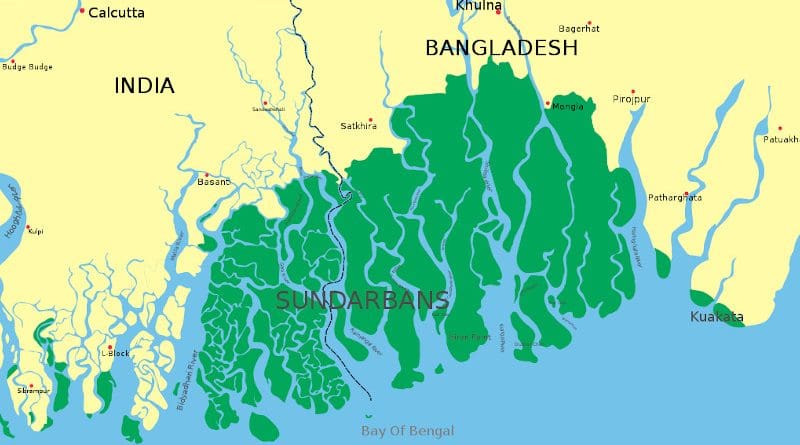Is US Opposition To Rampal Coal Plant Due To Love For Sundarbans Or To Keep India Away? – OpEd
During his six-hour trip to Dhaka on April 9, 2021, US President Joe Biden’s special envoy for climate change, John Kerry, bluntly raised the Rampal coal based plant issue during his official talks with Foreign Minister AK Abdul Momen.
However, Kerry didn’t raise this issue in his talks with Prime Minister Sheikh Hasina. He did say in a general way that coal-fired power plants are one of the main causes of environmental damage. He drew attention to the US opposition to coal-fired power plants.
John Kerry raised the Rampal issue again towards the end of the talks. “Can I ask an outrageous question? Can you stop Rampal?”
At one point Kerry said that he was confused about Bangladesh’s stance on the Sundarbans. On the one hand it is taking steps to protect the forest, and on the other it is taking up projects like the Rampal coal-fired power plant. “How is this possible”, he asked.
John Kerry was told that Bangladesh has always given importance to environmental protection. Despite resource constraints, various steps have been taken to face the climate change challenge. The protection of the Sundarbans is being given due importance in the construction of the Rampal power plant.
Earlier in 2017, the former US Vice President, environmentalist Al Gore, had appealed to Prime Minister Hasina to halt the construction of the Rampal power plant.
Prime Minister Sheikh Hasina asked Al Gore to visit Bangladesh to see the Sundarbans and see if the project is harming the environment.
In 1997, the United Nations Educational, Scientific and Cultural Organization (UNESCO) declared the Sundarbans as a World Heritage Site.
UNESCO has been raising objections to the project since 2018. A study carried out by UNESCO and the International Union for Conservation of Nature (IUCN) on the project says that it will do irreparable harm to the Sundarbans. This may also cause the Sundarbans to lose its status as a World Heritage Site, UNESCO has repeatedly warned.
There seems also a split within Bangladesh. The official version is, “The Bangladesh government has taken up various initiatives to protect the Sundarbans mangrove forests.” While some experts say that the power plant will put the mangrove forest at risk but the government is not paying attention to this issue.
It goes without saying that now financial and technical assistance for mega projects is driven by geopolitics rather that economic viability. Based on this stance, I am ready to say that Bangladesh is being pressurized to give up this project, only because of Indian involvement.
The Bangladesh Power Development Board and India’s National Thermal Power Corporation are jointly constructing the 1,320 MW power plant at Rampal in Bagerhat, next to the Sundarbans.
Opponents of the plant go to the extent of saying that the technology used in the Rampal project is of low standard. They raise a question if in other countries coal-fired power plants are being closed down, why Bangladesh should go for this.
Supporters of the plant say, it is a reality that at present, work on the Rampal power plant has advanced considerably. The government would not be able to do anything about it now, even if objections are raised.
The Bangladesh Foreign Minister, Abdul Momen, highlighted the various steps taken by Bangladesh to tackle threats from climate change and to protest the Sunderbans.

